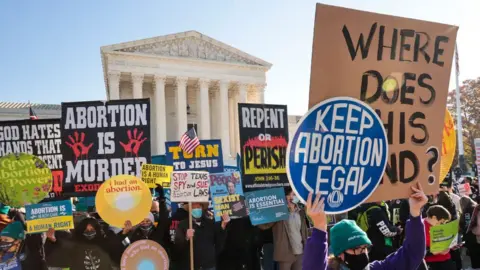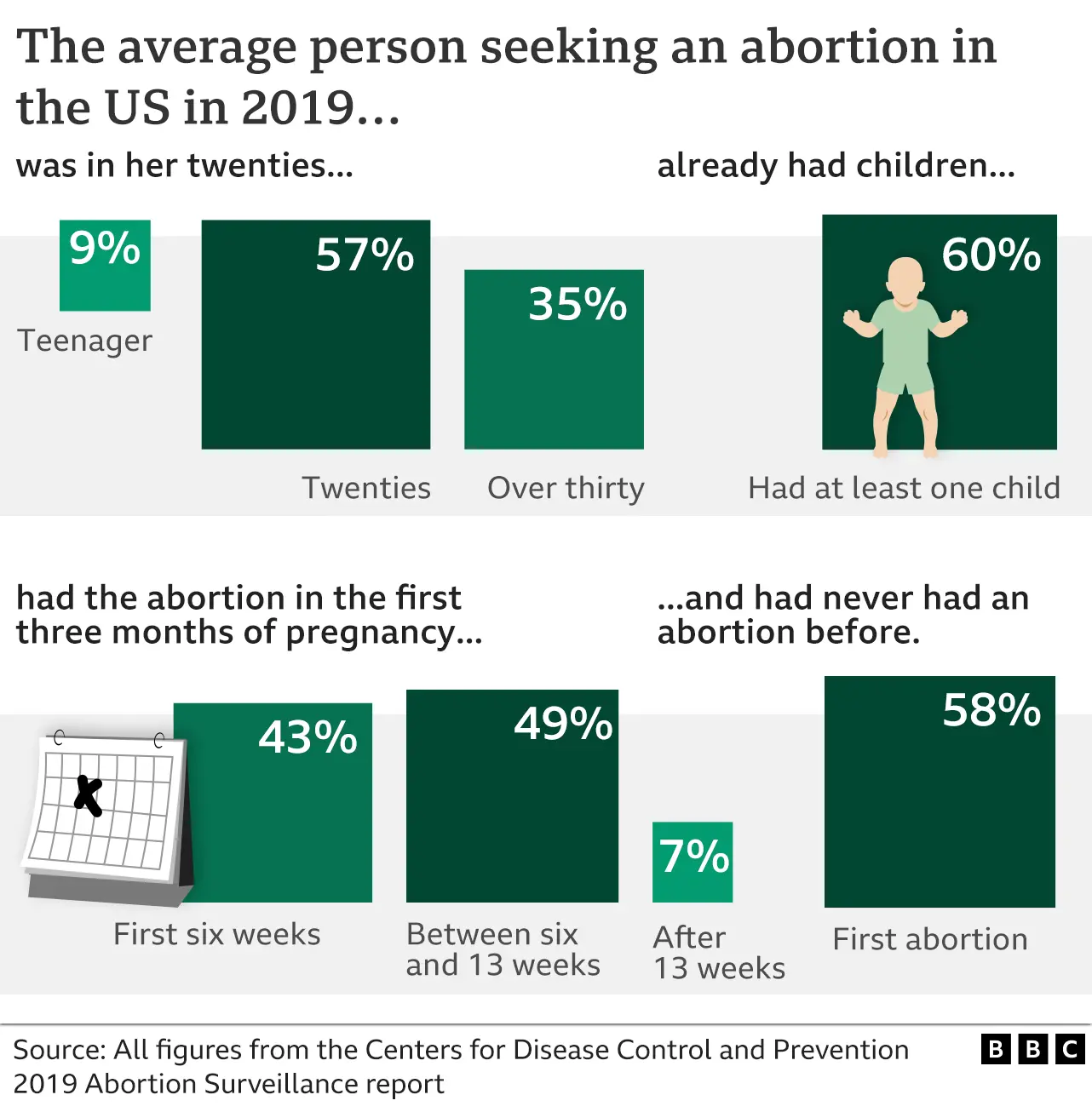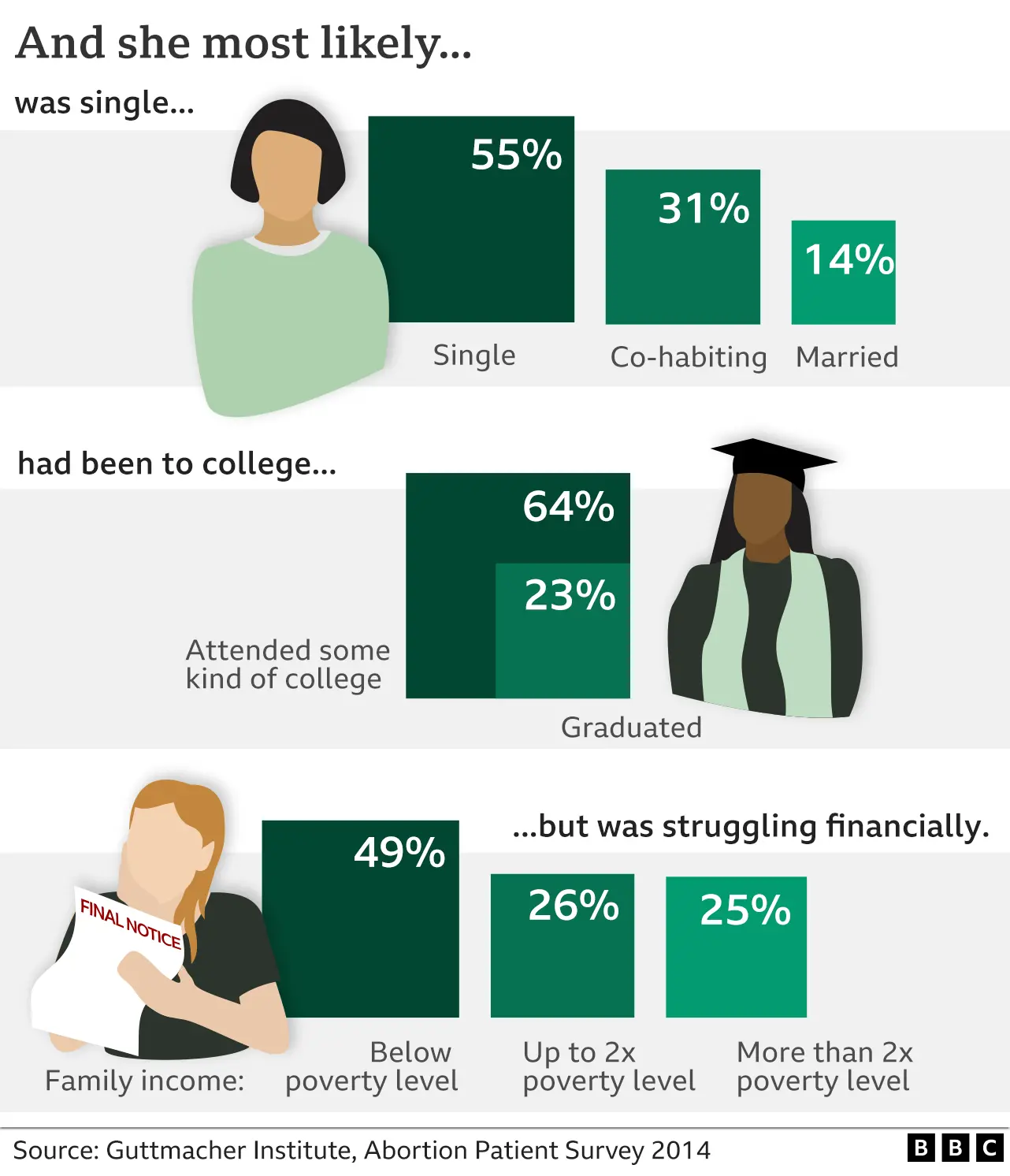Abortion: What does overturn of Roe v Wade mean?
 Getty Images
Getty ImagesThe US Supreme Court has opened the door for individual states to ban or severely restrict the ability for pregnant women to get abortions.
In 1973, the court had ruled in Roe v Wade that pregnant women were entitled to an abortion during the first three months of their pregnancy, while allowing for legal restrictions and bans in the second and third trimester.
Now the court has overturned that earlier ruling, effectively making it possible for states to ban abortions earlier than 12 weeks.
Abortion will not automatically become illegal in the US - but individual states will now be allowed to decide if and how to allow abortions.
Which states will ban abortion?
Thirteen states had passed "trigger laws" that come into effect upon Roe v Wade being overturned. Others have left old laws on the books that banned abortion prior to 1973 - they could now go back into force.
In the days that followed the ruling, several bans came into force, but some of those have been temporarily blocked by the courts, setting things up for further legal battles.
Over the past decade, several states have also tried to pass laws making abortion illegal, except in a few circumstances such as if the pregnant woman's life is at risk. Some of those laws were struck down by lower courts, as they appeared to violate Roe v Wade. But now they will likely come back into force.
In total more than 20 states are making moves to limit access to abortion, according to Guttmacher. Some states intend to ban abortion from the moment of conception, while others are introducing bans at six or more weeks.
All states allow abortion to save the life of the mother, while some will also allow exceptions to their ban for cases of rape or incest.
Most have said they will not prosecute women for trying to end their pregnancy, reserving criminal penalties for abortion providers and others who try and help women get abortions.
Here's a look at what could happen in those states now that Roe v Wade has been overturned.
Who will be most affected by Supreme Court decision?
Some 40 million women of child-bearing age will live in states where abortion will become more difficult to access, according to the Guttmacher Institute, a research organisation that supports abortion rights.

About 630,000 abortions were performed in the US in 2019, according to the US Center for Disease Control (CDC), although Guttmacher's own research indicates it may be closer to 860,000.
The CDC says that the vast majority of abortions, 92.8%, are performed during the first trimester. Most people who get abortions are unmarried, although they may be living with a partner at the time. About one in 10 women who get an abortion are teenagers, with most being in their 20s. About 60% of people who get abortions have also given birth before, and nearly 60% had never had an abortion before.

State-specific statistics in the interactive table above are from 2017, the most recent date for which data is available from Guttmacher Institute.
The Guttmacher Institute's 2014 Abortion Patient Survey still provides the most recent national overview on the social and economic background of those having abortions in the US. However, changes in the US economy and access to abortion over the last eight years means the picture could have changed.
Update: Language in this story has been amended to more accurately reflect the specifics of the Roe v Wade ruling.
